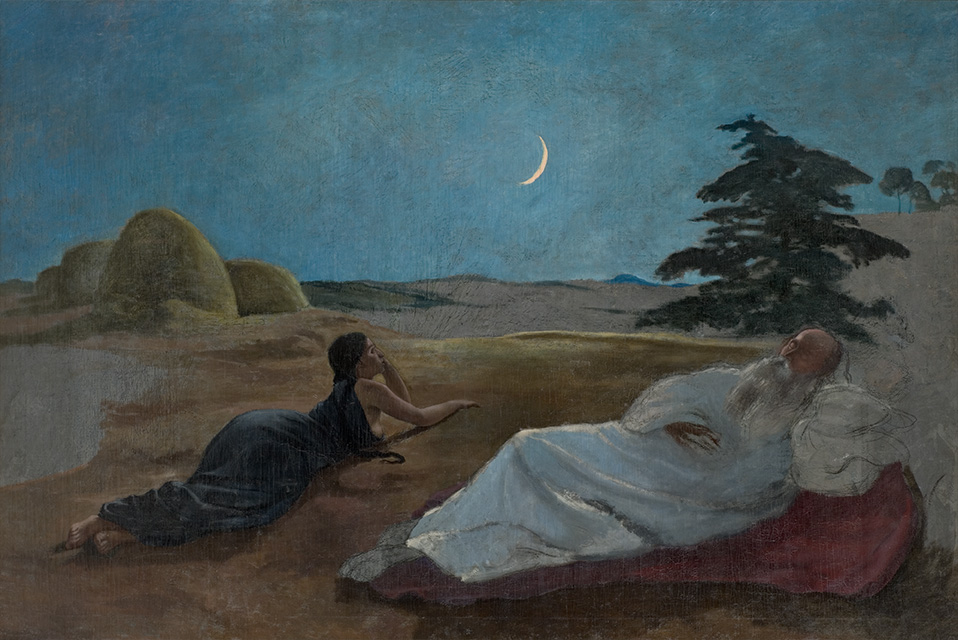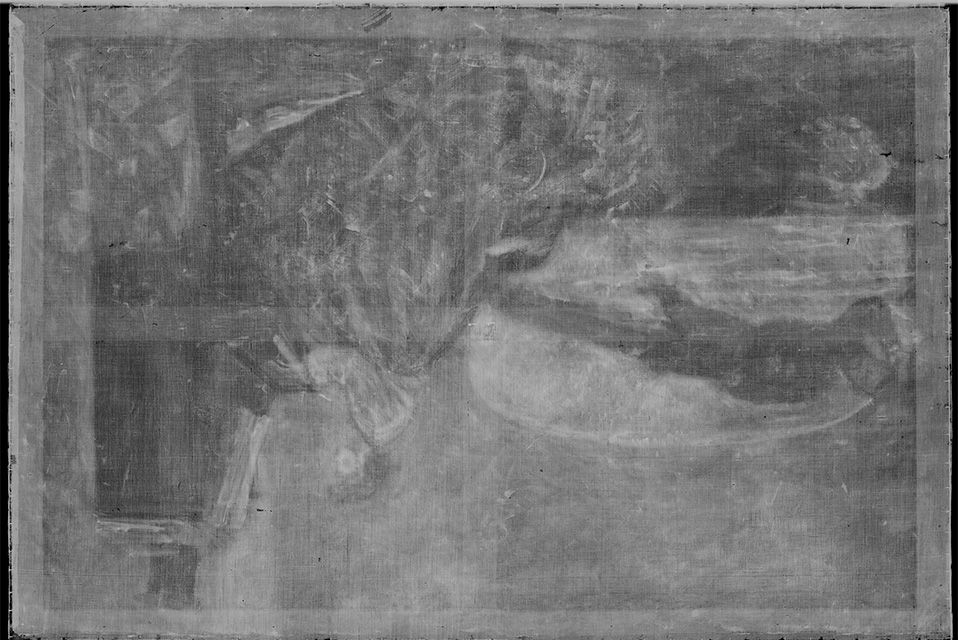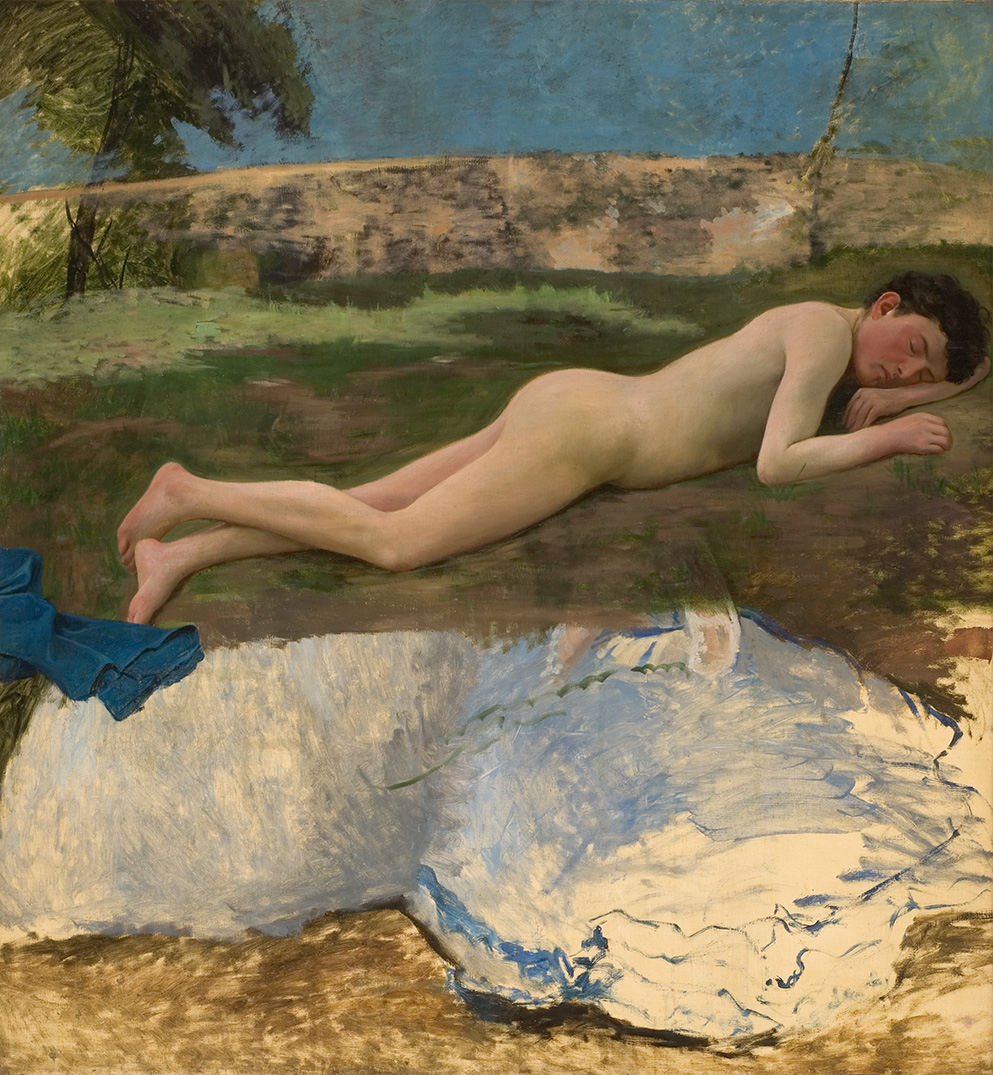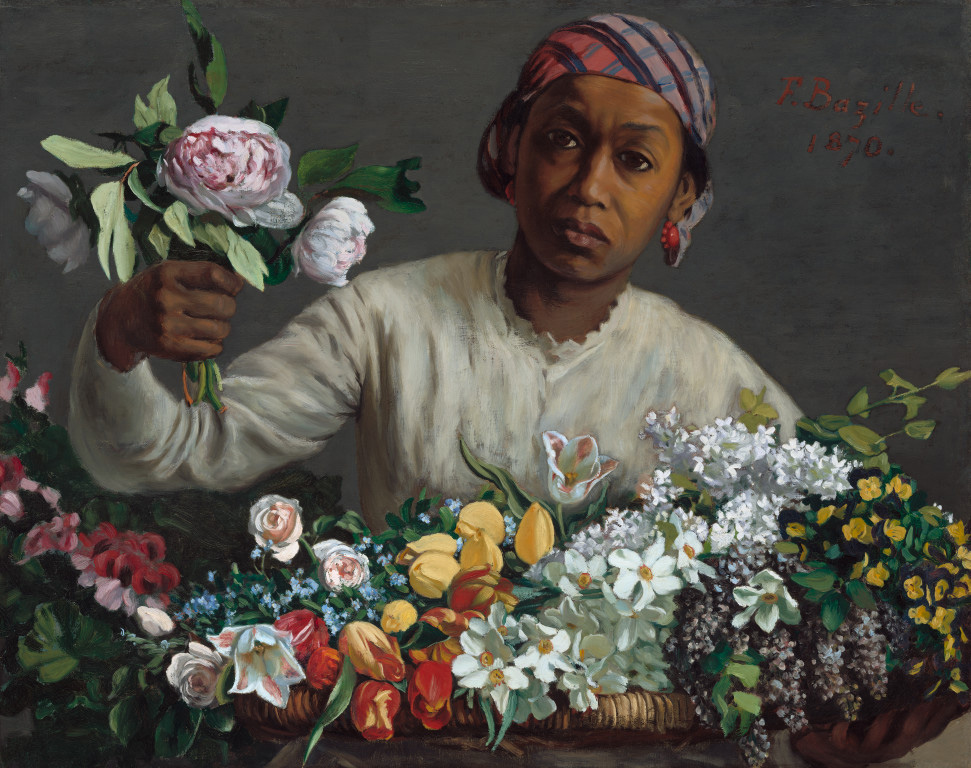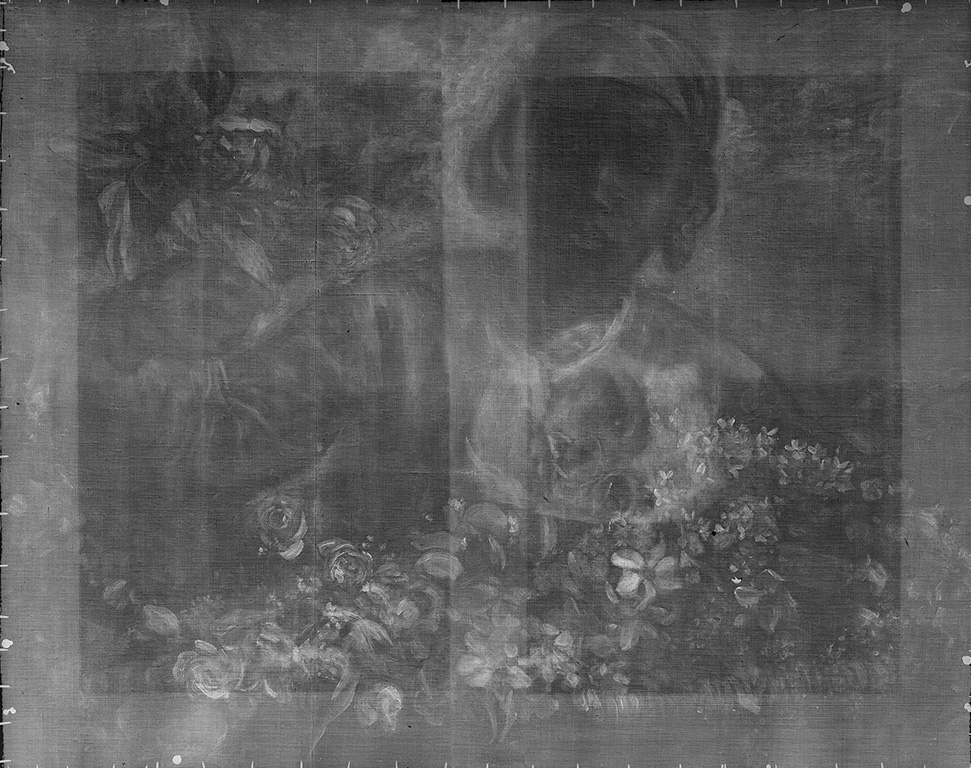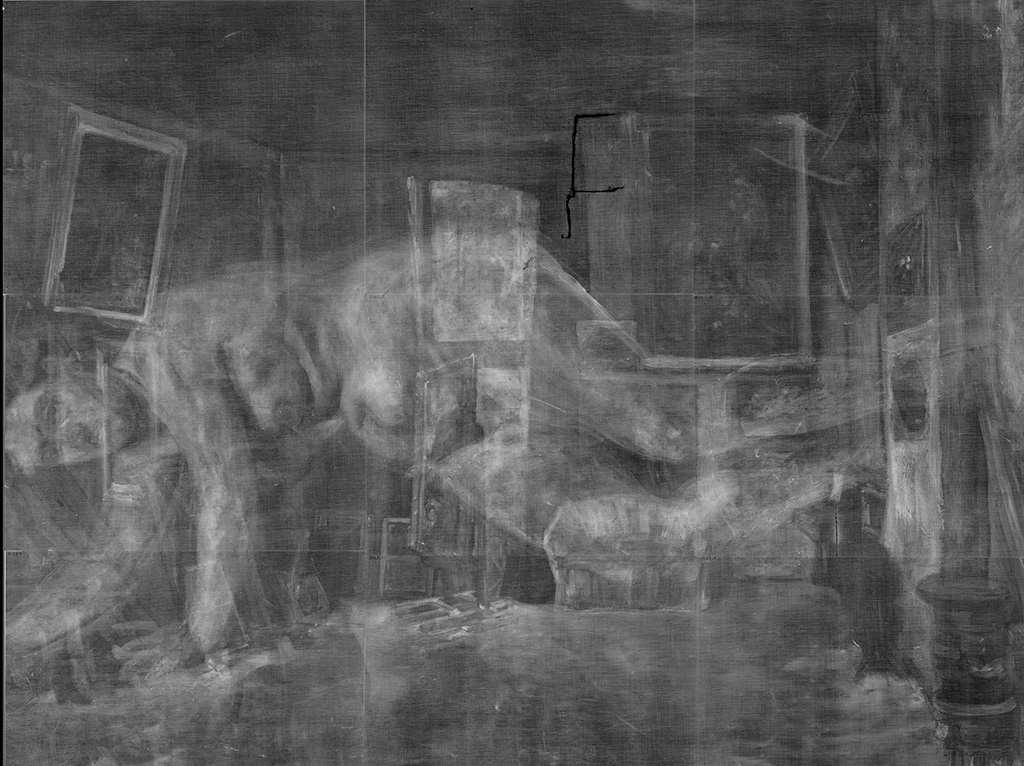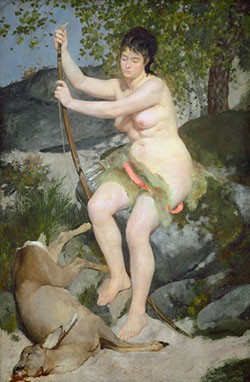In 1865, Bazille embarked on a large canvas that was intended to be his first submission to the official Paris Salon, Young Woman at the Piano. He chose a modern subject for his debut: a girl playing a piano and a young man listening to her.
In a letter to his mother, Bazille, seemingly overwhelmed by the pressure of exhibiting publicly for the first time, recounted his struggles with this painting:
“The terribly difficult part is the woman; there is a green satin dress, which I hired, and a blond head that I am really afraid of not doing as well as possible although Courbet complimented me on it when it was just begun.”
The painting was rejected by the exhibition jury, and was never seen again. Presumed lost or destroyed, it was instead merely painted over with a moonlit scene from the Old Testament story of Ruth and Boaz
